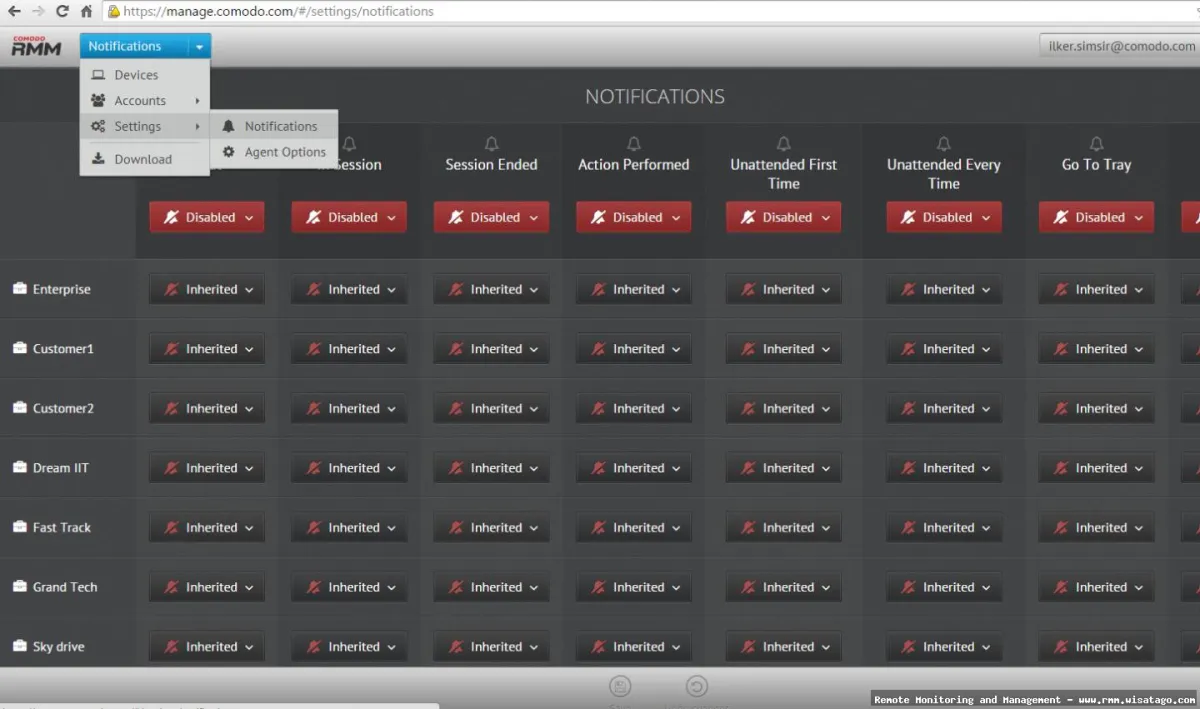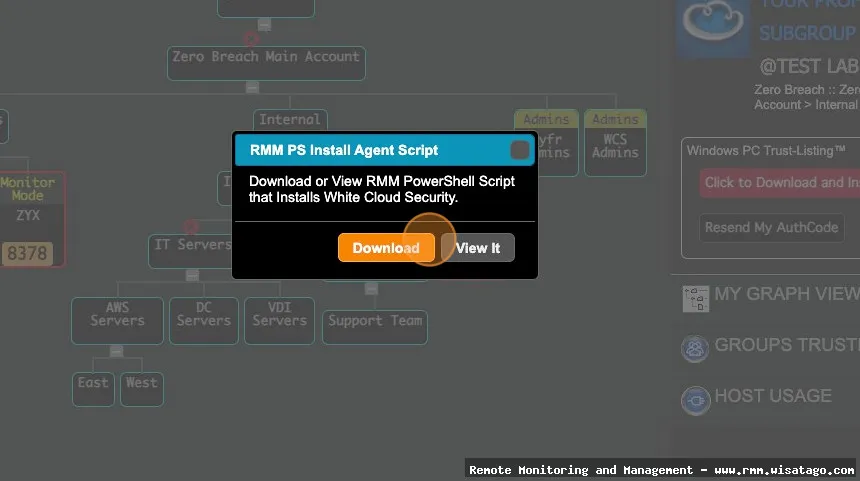So, you’re thinking about deploying an RMM (Remote Monitoring and Management) solution across a large network? That’s fantastic! It’s a game-changer for efficiency and proactive IT management. But let’s be honest, rolling out an RMM across hundreds, or even thousands, of endpoints isn’t like installing software on your personal laptop. It’s a strategic project that demands careful planning and execution. A poorly implemented RMM can quickly become a resource hog, create more problems than it solves, and ultimately lead to frustration and wasted investment. This article is your roadmap to a successful large-scale RMM deployment.
I’ve been there, done that, and learned a few hard lessons along the way. From unexpected bandwidth bottlenecks to agent compatibility issues, I’ve seen firsthand the pitfalls that can derail even the most well-intentioned RMM implementation. But I’ve also witnessed the incredible benefits of a properly configured and managed RMM – reduced downtime, improved security posture, and a happier, more productive IT team. Think of this guide as a distillation of those experiences, designed to help you avoid the common mistakes and maximize the value of your RMM investment.

We’ll cover everything from initial planning and vendor selection to agent deployment strategies, configuration best practices, and ongoing maintenance. We’ll also delve into the crucial aspects of security, automation, and reporting. Whether you’re a seasoned IT professional or relatively new to the world of RMM, this guide will provide you with the knowledge and insights you need to confidently navigate the complexities of a large-scale RMM deployment and unlock its full potential.
Understanding the Scope of Large-Scale RMM Deployment
Large-scale RMM deployments differ significantly from smaller implementations. The sheer volume of endpoints introduces complexities related to bandwidth, server infrastructure, agent management, and security. Before diving into the specifics, it’s crucial to grasp these key differences.
Defining “Large-Scale”
What constitutes “large-scale” is subjective and depends on your organization’s size and infrastructure. However, generally, we’re talking about environments with hundreds or thousands of endpoints, including servers, workstations, laptops, and potentially mobile devices. This scale requires a more robust and scalable RMM solution compared to those designed for smaller businesses.
Key Challenges in Large-Scale Deployments
- Bandwidth Consumption: RMM agents constantly communicate with the central server, consuming bandwidth. Multiply that by hundreds or thousands of endpoints, and you can quickly overwhelm your network.
- Server Infrastructure: The RMM server needs to be adequately sized to handle the load from all the agents. This includes CPU, memory, storage, and network bandwidth.
- Agent Deployment and Management: Deploying and updating agents across a large network can be a logistical nightmare without proper planning and automation.
- Security Risks: A compromised RMM server can provide attackers with access to all managed endpoints, making security a paramount concern.
- Configuration Management: Maintaining consistent configurations across all endpoints is crucial for security and stability, but it can be challenging in a large environment.
- Scalability: The solution needs to be able to scale as your business grows, without requiring significant infrastructure changes.
Planning Your RMM Deployment
Proper planning is the cornerstone of a successful RMM deployment. This involves defining your objectives, assessing your infrastructure, and selecting the right RMM solution.
Defining Your Objectives
Clearly define what you want to achieve with your RMM solution. Common objectives include:
- Proactive monitoring and alerting for critical system events.
- Automated patching and software updates.
- Remote access and control for troubleshooting.
- Asset inventory management.
- Security monitoring and threat detection.
- Improved IT service desk efficiency.
Having clear objectives will help you evaluate different RMM solutions and prioritize features.

Assessing Your Infrastructure
Before selecting an RMM solution, thoroughly assess your existing infrastructure. Consider the following:
- Number and types of endpoints: Servers, workstations, laptops, mobile devices, operating systems (Windows, macOS, Linux).
- Network bandwidth: Available bandwidth and utilization patterns.
- Server infrastructure: Existing server hardware and virtualization environment.
- Security infrastructure: Firewalls, intrusion detection systems, antivirus software.
- Existing IT management tools: Integration requirements with existing tools (e.g., ticketing systems, SIEM).
This assessment will help you determine the hardware requirements for the RMM server and identify any potential compatibility issues.
RMM Vendor Selection Criteria
Choosing the right RMM vendor is crucial. Consider these factors when evaluating different solutions:
- Scalability: Can the solution handle your current and future endpoint count?
- Features: Does the solution offer the features you need to meet your objectives?
- Security: Does the vendor have a strong security track record and implement robust security measures?
- Integration: Does the solution integrate with your existing IT management tools?
- Support: Does the vendor offer reliable and responsive support?
- Pricing: Is the pricing model transparent and cost-effective?
- Ease of Use: Is the interface intuitive and easy for your team to learn and use?
- Reporting Capabilities: Can the solution generate meaningful reports on system performance, security events, and other key metrics?
Agent Deployment Strategies
Deploying RMM agents across a large network requires careful planning and execution. Manual installation is impractical for large deployments, so you’ll need to leverage automated methods.
Automated Deployment Methods
- Group Policy (GPO): For Windows environments, GPO is a common method for deploying software to domain-joined computers.
- Software Distribution Tools: Tools like Microsoft Endpoint Configuration Manager (MECM), PDQ Deploy, and others can be used to deploy agents to large numbers of endpoints.
- Scripting: PowerShell or other scripting languages can be used to automate the installation process.
- RMM Vendor’s Deployment Tool: Many RMM vendors provide their own deployment tools that simplify the process.
Staged Rollout
Avoid deploying the RMM agent to all endpoints simultaneously. A staged rollout allows you to identify and resolve any issues before they impact the entire network. Start with a small group of test machines, then gradually expand the deployment to larger groups.
Agent Configuration and Optimization
Properly configure the RMM agent to minimize its impact on system performance. Consider the following:

- Resource Usage: Limit the agent’s CPU and memory usage.
- Polling Intervals: Adjust the frequency at which the agent collects data. Shorter intervals provide more granular data but consume more bandwidth.
- Exclusions: Exclude unnecessary files and folders from scanning to reduce resource usage.
- Scheduled Tasks: Schedule resource-intensive tasks, such as full scans, during off-peak hours.
Configuration Best Practices
Proper configuration is crucial for maximizing the value of your RMM solution and minimizing potential problems.
Alerting and Monitoring
Configure alerts to notify you of critical system events, such as high CPU usage, low disk space, or security breaches. Prioritize alerts based on severity and configure appropriate notification methods (e.g., email, SMS, ticketing system). Avoid alert fatigue by only alerting on genuinely important issues.
Patch Management
Automated patch management is a critical security measure. Configure the RMM solution to automatically deploy security patches and software updates to all managed endpoints. Establish a testing process to ensure that patches don’t cause compatibility issues.
Automation
Leverage automation to streamline repetitive tasks and improve efficiency. Create automated scripts to perform tasks such as restarting services, cleaning up temporary files, and running diagnostics.
Security Hardening
Secure the RMM server and agents to prevent unauthorized access. Implement the following security measures:
- Strong Passwords: Use strong, unique passwords for all RMM accounts.
- Two-Factor Authentication (2FA): Enable 2FA for all RMM accounts.
- Access Control: Restrict access to the RMM server and agents to authorized personnel only.
- Regular Security Audits: Conduct regular security audits to identify and address vulnerabilities.
- Keep RMM Server Updated: Ensure the RMM server software is always up-to-date with the latest security patches.
Ongoing Maintenance and Optimization
An RMM deployment is not a “set it and forget it” solution. Ongoing maintenance and optimization are essential for ensuring its continued effectiveness.

Regular Review of Alerts and Policies
Periodically review your alerts and policies to ensure they are still relevant and effective. Adjust thresholds and notification methods as needed. Remove outdated or unnecessary alerts and policies.
Performance Monitoring and Tuning
Monitor the performance of the RMM server and agents. Identify and address any performance bottlenecks. Tune the agent configuration to optimize resource usage. Investing in technology infrastructure requires careful consideration, where Profitable Rmm Solutions can significantly impact a company’s bottom line
Software Updates and Upgrades
Keep the RMM server and agents up-to-date with the latest software updates and upgrades. These updates often include security patches and performance improvements.
Documentation and Training
Maintain comprehensive documentation of your RMM deployment, including configuration settings, policies, and procedures. Provide training to IT staff on how to use the RMM solution effectively.
Reporting and Analytics
The RMM solution can generate valuable reports on system performance, security events, and other key metrics. Use these reports to identify trends, proactively address issues, and demonstrate the value of the RMM solution to management.
Key Performance Indicators (KPIs)
Define key performance indicators (KPIs) to track the effectiveness of your RMM deployment. Common KPIs include:

- Mean Time To Resolution (MTTR): The average time it takes to resolve IT issues.
- Uptime: The percentage of time that systems are available and operational.
- Patch Compliance: The percentage of systems that are up-to-date with the latest security patches.
- Security Incidents: The number of security incidents detected and resolved.
Custom Reporting
Create custom reports to track specific metrics that are important to your organization. For example, you might create a report to track the number of software installations, the amount of disk space used, or the number of failed login attempts.
Conclusion
Implementing an RMM solution across a large network is a significant undertaking, but the benefits are well worth the effort. By following the best practices outlined in this guide, you can ensure a successful deployment and unlock the full potential of your RMM solution. Remember to plan carefully, choose the right vendor, deploy agents strategically, configure the solution properly, and maintain it diligently. With a well-managed RMM solution, you can proactively manage your IT infrastructure, improve security, reduce downtime, and empower your IT team to focus on strategic initiatives.
Conclusion
Successfully deploying RMM at scale is a complex undertaking, but by prioritizing planning, automation, and continuous improvement, MSPs can significantly enhance their operational efficiency, security posture, and ultimately, profitability. The journey from initial assessment to full deployment and ongoing management requires a strategic mindset, a commitment to best practices, and a willingness to adapt to the evolving needs of both the MSP and its clients. Remembering the core principles outlined – meticulous planning, robust automation, comprehensive training, and proactive monitoring – will pave the way for a smoother, more effective, and less disruptive RMM implementation.
This article has highlighted key considerations for a large-scale RMM deployment, focusing on areas like standardization, security hardening, and efficient patch management. By implementing these best practices, you can transform your RMM platform from a simple monitoring tool into a powerful engine for growth and service excellence. Ready to take the next step in optimizing your RMM deployment? We encourage you to explore our resources and consider contacting our expert consultants for personalized guidance and support. Visit www.example.com/rmm-consulting to learn more and schedule a consultation today.
Frequently Asked Questions (FAQ) about Large-Scale RMM Deployment Best Practices
What are the key considerations for planning a large-scale RMM (Remote Monitoring and Management) deployment across a distributed network, and how can I ensure a smooth rollout?
Planning a large-scale RMM deployment requires careful consideration of your network infrastructure, security protocols, and end-user impact. Start with a thorough network assessment to identify potential bottlenecks and compatibility issues. A phased rollout is critical; begin with a pilot group to test configurations and identify unforeseen problems before deploying to the entire organization. Prioritize security by implementing strong authentication, encryption, and access controls. Develop comprehensive documentation and training materials for both IT staff and end-users to minimize disruption and ensure proper usage. Finally, choose an RMM solution that scales effectively and offers robust reporting capabilities to monitor performance and identify potential issues proactively. Effective communication is also key to manage expectations and address concerns throughout the deployment process.
How can I effectively manage and mitigate the security risks associated with deploying an RMM solution across a large number of endpoints in a corporate environment?
Securing a large-scale RMM deployment is paramount due to the privileged access RMM tools possess. Implement multi-factor authentication (MFA) for all RMM accounts, especially administrator accounts, to prevent unauthorized access. Regularly review and update access control lists (ACLs) to ensure only authorized personnel have access to specific endpoints or functionalities. Harden the RMM server itself by applying security patches promptly, disabling unnecessary services, and using a strong firewall. Monitor RMM activity logs for suspicious behavior and implement intrusion detection systems (IDS) to identify and respond to potential threats. Use endpoint detection and response (EDR) solutions in conjunction with your RMM to provide an additional layer of security. Finally, conduct regular security audits and penetration testing to identify and address vulnerabilities in your RMM deployment. Effective IT management often relies on a system, RMM, to proactively monitor and maintain infrastructure
.
What strategies can I use to optimize the performance and minimize the resource impact of an RMM agent on a large number of devices, particularly on older or resource-constrained systems?
Optimizing RMM agent performance is crucial to avoid impacting end-user productivity. Configure RMM agents to perform scheduled tasks during off-peak hours to minimize resource contention. Utilize granular policy settings to tailor monitoring and management activities to specific device groups, avoiding unnecessary overhead on resource-constrained systems. Implement bandwidth throttling to limit the amount of network bandwidth consumed by RMM agents, especially during data transfers. Regularly review and optimize the RMM agent’s configuration to disable unnecessary features or services. Consider using lightweight RMM agents or modules that are specifically designed for older hardware. Finally, monitor CPU, memory, and disk I/O usage on monitored devices to identify potential performance bottlenecks caused by the RMM agent and adjust configurations accordingly. Proper planning and configuration are key to a successful and efficient RMM deployment.